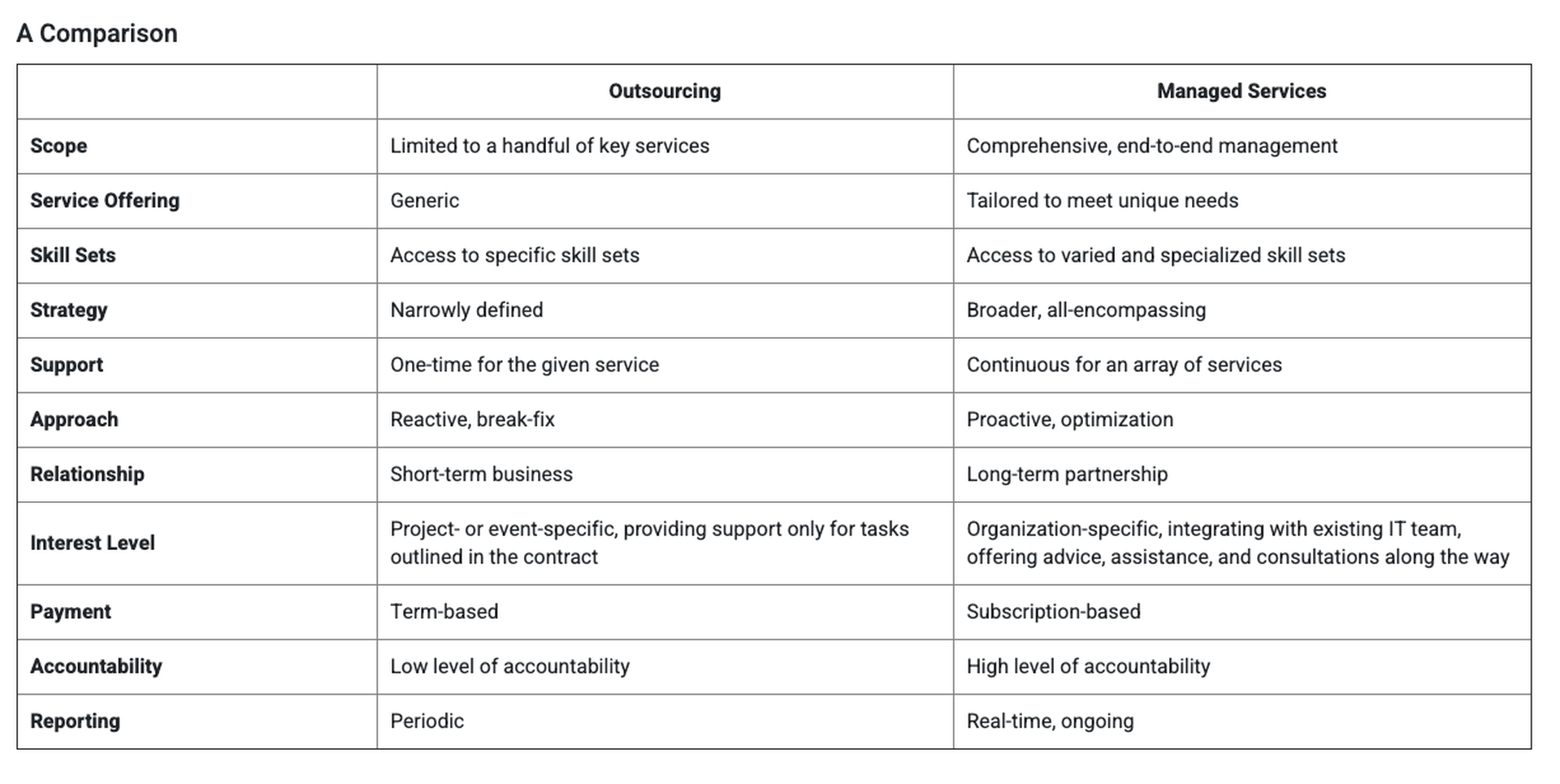As organizations look to keep up with the pace of change, they realize that they lack the capabilities they need to get the most from their IT infrastructure and systems. Given how complex and time-consuming day-to-day management of technology can be, many organizations today take the outsourcing route; but not many realize the benefits of managed services over plain vanilla outsourcing.
Although both involve receiving IT support from a third-party provider, they vastly differ in their scope, approach, and outlook. Read on to understand the differences between outsourcing and managed services and what factors to consider while determining which of the two options fits best for your business.
Outsourcing Explained
Gartner defines IT outsourcing as “the use of external service providers to effectively deliver IT-enabled business process, application service, and infrastructure solutions for business outcomes. Outsourcing can enable enterprises to reduce costs, accelerate time to market, and take advantage of external expertise, assets and/or intellectual property”. Organizations can pick specific services and outsource them to an external company to help meet specific business needs; these can include outsourcing tier-1 helpdesk, web development, database management, and application support.
By gaining access to specialized services, organizations can enjoy the support delivered by experts – with minimal or no supervision. They can also improve the efficiency of specific tasks, save up on infrastructure management and technology costs, and focus on the core areas of their business.
Managed Services Explained
Gartner defines managed services as “the transfer of all or part of the day-to-day management of an organization’s network, application, infrastructure, and security via ongoing, regular support, and active administration – either on-premises, in a third-party data center, or using the cloud”. Services offered by a managed services provider may include system operation or support, capacity planning, asset management, IT administration and troubleshooting, security management, configuration management, and system repair.
Contrary to popular belief, managed services is a lot more than a fancy synonym for outsourcing; it is in fact:
- A holistic approach to technology management, delivering a comprehensive range of services within one or many domains
- An end-to-end support offering for your IT ecosystem; right from managing and maintaining IT systems to suggesting ways in which you can further enhance the efficiency of your systems and productivity of your employees
- Offered by a large team of skilled IT professionals, enabling organizations to make the best use of their IT and enjoy superior end-user experiences while constantly receiving operational support for their wide range of IT apps and services
- A great way of enjoying long-term, consultative services and establishing an ongoing relationship and receiving IT services by a pool of specialists who excel in a broad range of capabilities

Make the Right Choice
Despite organizations interchangeably using the terms outsourcing and managed services, there are several factors that make them poles apart: right from their scope, approach, relationship, to the outlook, service portfolio, and support model. Although outsourcing key elements of your IT to a partner can help you bring tasks to closure, given the times in which businesses operate today, the need for proactive and holistic long-term support is pressing.
Opting for a managed service provider instead can really pay off substantial dividends. An MSP can not only take on the day-to-day management of your IT ecosystem; it can optimally secure and proactively manage your tech environment while suggesting ways and means in which you can improve efficiency, reduce the likelihood of problems ever occurring, and propel your business to new heights.
Read more from Synoptek here.




